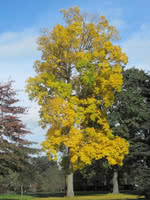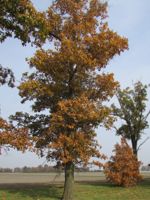Mon-Fri 9am - 5pm Mountain time
Northern Pin Oak vs Bitternut Hickory
Carya cordiformis
Quercus ellipsoidalis
NOT AVAILABLE THIS SEASON - MIGHT RETURN
NOT AVAILABLE THIS SEASON - MIGHT RETURN
Bitternut Hickory is a large deciduous tree that makes a great shade tree for yards and parks. This tree is native to Eastern North America. Although it produces nuts, they are bitter and inedible. Some consider this wood to be the best flavour for smoking meats.
Plant Bitternut Hickory in it’s forever home. It is difficult to transplant due to its long taproot, and may not survive.
The wood is strong and has historically been used for wheels, ladders, and furniture.
Northern Pin oak has an attractive but irregular rounded crown with lower hanging branches. This species is one of the few oak species recommended for the prairies and colder areas. Northern Pin Oak prefers drier habitats.
The spectacular fall leaf color of this tree is the primary reason for its popularity. Fall leaves turn orange and red to reddish brown.
Squirrels, jays, deer, and similar animals love its acorns.
Note: Most Oak species can be considered toxic for many animals.

